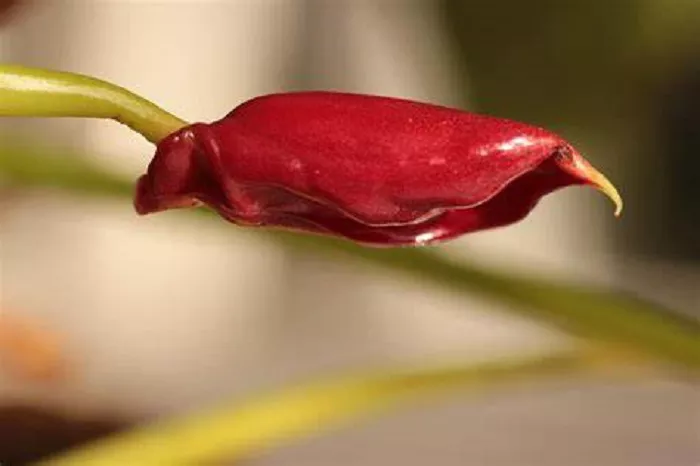Anthuriums, with their vibrant and heart-shaped flowers, are a stunning addition to any garden. However, many gardeners find themselves puzzled by the intricate process of pollinating these exotic plants. In this article, we will delve into the fascinating world of anthurium pollination, exploring the techniques and tips that can help you successfully propagate these beautiful flowers. Whether you are a seasoned gardener or a novice enthusiast, this guide will equip you with the knowledge to nurture your anthuriums to their full potential.
Understanding Anthurium Pollination
The Importance of Pollination
Pollination is a crucial process in the life cycle of anthuriums. It enables the plant to produce seeds, which are essential for propagation. In their natural habitat, anthuriums rely on a variety of pollinators, including beetles and flies. However, in a controlled garden environment, these pollinators may not be present, making manual pollination a valuable skill for any gardener.
The Anatomy of Anthurium Flowers
Before diving into the pollination process, it is important to understand the anatomy of anthurium flowers. The flower consists of a spathe, which is the colorful, leaf-like structure, and a spadix, the central spike where the actual flowers are located. The spadix contains both male and female flowers, which mature at different times. This asynchronous maturation is a natural mechanism to prevent self-pollination.
Preparing for Pollination
Choosing the Right Time
Timing is everything when it comes to pollinating anthuriums. The female flowers are receptive for only a short period, typically lasting a few days. Observe the spadix closely; the female flowers are ready when the surface appears shiny and slightly sticky. The male flowers, on the other hand, release pollen when they are mature, which can be identified by the presence of yellow or white pollen grains on the spadix.
Gathering Tools and Materials
Manual pollination requires a few simple tools and materials. You will need a fine paintbrush or a cotton swab to transfer pollen, a magnifying glass to get a closer look at the flowers, and a small container to collect the pollen. Ensure that these tools are clean to avoid introducing any contaminants to the flowers.
The Pollination Process
Collecting Pollen
Begin by carefully collecting pollen from the mature male flowers. Gently brush the spadix with your paintbrush or cotton swab, ensuring that you pick up the pollen grains. Transfer the collected pollen to a small container for safekeeping. It is important to handle the flowers delicately to avoid damaging them.
Applying Pollen to Female Flowers
Once you have collected the pollen, the next step is to apply it to the receptive female flowers. Using the same brush or swab, gently dab the pollen onto the sticky surface of the female flowers. Be thorough but gentle to ensure that the pollen adheres properly. Repeat this process for all receptive female flowers on the spadix.
Monitoring and Care
After pollination, it is essential to monitor the flowers closely. Keep the plant in a warm and humid environment to support the development of seeds. Over the next few weeks, the spadix will begin to change, and if pollination was successful, small berries will start to form. These berries contain the seeds that can be used for propagation.
Common Challenges and Solutions
Pollination Failure
Despite your best efforts, pollination may not always be successful. This can be due to various factors, including improper timing, insufficient pollen transfer, or environmental conditions. If you notice that the flowers are not developing seeds, try adjusting your technique and timing for future attempts.
Pest and Disease Management
Anthuriums are susceptible to pests and diseases, which can impact their ability to produce viable seeds. Keep an eye out for common pests such as aphids and mealybugs, and treat them promptly with organic insecticides. Maintaining a healthy growing environment with proper watering and fertilization can also help prevent diseases.
Propagation from Seeds
Harvesting Seeds
Once the berries on the spadix have fully ripened, it is time to harvest the seeds. Gently remove the berries and extract the seeds inside. It is important to clean the seeds thoroughly to remove any pulp, as this can inhibit germination.
Germinating Seeds
To germinate anthurium seeds, prepare a well-draining potting mix and sow the seeds shallowly. Keep the soil moist but not waterlogged, and place the container in a warm, bright location. Germination can take several weeks, so be patient and maintain consistent care.
Conclusion
Pollinating anthurium flowers may seem like a complex task, but with the right knowledge and techniques, it can be a rewarding experience. By understanding the anatomy of the flowers, timing the pollination process correctly, and providing proper care, you can successfully propagate these beautiful plants. Whether you are aiming to expand your garden or simply enjoy the satisfaction of nurturing new life, the journey of anthurium pollination is one that every gardener should embrace.


